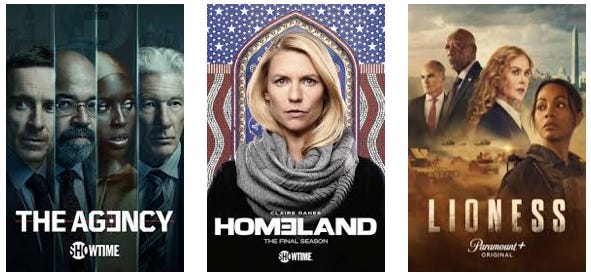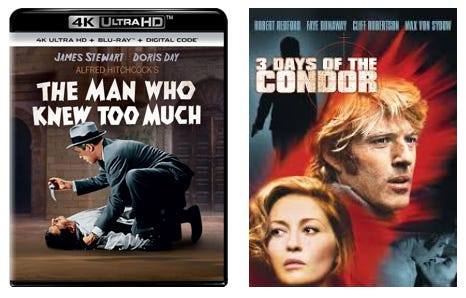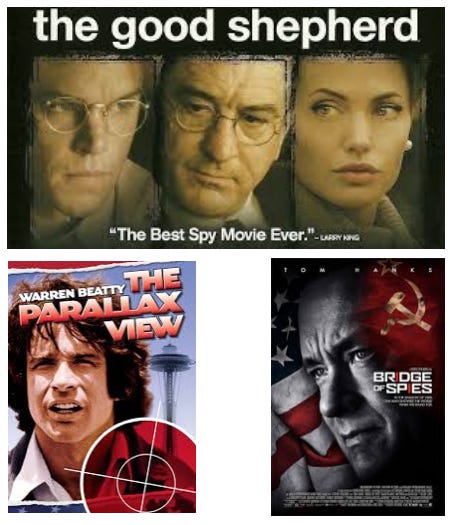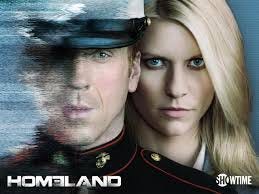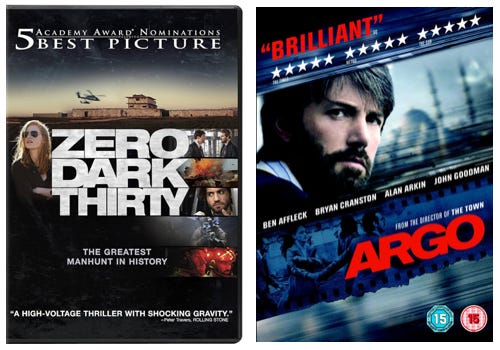The CIA’s Charm Offensive: Hollywood as a Strategic Ally
From Shadows to Spotlight: The CIA’s Image Makeover Through Hollywood
Introduction
The relationship between the CIA and Hollywood is a fascinating study in the intersection of secrecy and storytelling, as well as the balance of power and perception. From its inception, the CIA has operated in the shadows, shrouded in intrigue and often associated with some of the most contentious chapters in American history. Early Hollywood portrayals of intelligence work—rooted in Cold War espionage thrillers—presented the agency as either a bastion of national security or a faceless enigma. Over time, as public trust in government agencies ebbed and flowed in the wake of scandals like the Iran-Contra Affair or the release of interrogation reports, the CIA began to confront a growing challenge: the need to control its narrative amidst skepticism and scrutiny.
In recent years, the agency has pivoted toward a more collaborative approach, embracing Hollywood as a strategic ally in reshaping its public image. Shows like Homeland, The Agency, and more recently Lioness exemplify a calculated effort to portray the CIA in a favorable light. These productions weave complex, gripping stories about counterterrorism, geopolitics, and espionage, often depicting CIA operatives as dedicated professionals who face profound moral and personal sacrifices in their service to the nation. While these narratives entertain, they also offer a more accessible and humanized vision of the agency, countering the perception of it as a cold, faceless bureaucracy.
This shift represents more than just a cultural alignment. It is a deliberate charm offensive. By consulting on scripts, granting limited access to its facilities, and engaging with writers and producers, the CIA ensures that its perspective is incorporated into these stories. These portrayals subtly reinforce the notion that the agency is an indispensable part of America’s security apparatus, combating external threats with resolve and precision. They craft a story of heroism, professionalism, and ethical struggle that resonates with audiences, leaving an impression of the CIA as not only competent but morally engaged in its mission.
The implications of this partnership extend beyond entertainment. The CIA's cooperation with Hollywood is part of a larger effort to manage its image in an era where its real-world actions are scrutinized more intensely than ever. At the same time, the agency is acutely aware of Hollywood’s unparalleled influence in shaping cultural perceptions. By participating in the creation of shows and films that focus on the CIA's role in defending democracy and freedom, the agency is actively constructing a narrative that bolsters its credibility and maintains public support. This collaboration is not merely about damage control; it is about building trust, inspiring recruitment, and ensuring its relevance in the national imagination. The CIA has effectively turned Hollywood into an ally in its ongoing battle to shape perceptions, demonstrating how deeply intertwined entertainment and national security have become.
The Historical Context
The relationship between the CIA and Hollywood has evolved over decades, shaped by the broader cultural and political contexts in which they intersect. In its early years, the CIA was portrayed through the lens of Cold War spy thrillers, reflecting the era’s anxieties about espionage, ideological conflict, and the constant threat of nuclear war. Films like The Man Who Knew Too Much and Three Days of the Condor presented intelligence operatives as enigmatic, resourceful figures, often working against shadowy adversaries from the Soviet bloc. These portrayals tended to oscillate between glamorizing the intrigue of espionage and exposing the moral ambiguities inherent in covert operations. While the Cold War provided fertile ground for such narratives, the CIA's depiction in Hollywood was relatively simplistic, largely informed by a binary view of good versus evil that mirrored public sentiment during that time.
As the Cold War waned, the simplicity of these narratives began to give way to more complex and often critical examinations of the CIA’s role in global affairs. Public sentiment shifted significantly following controversial incidents like the Vietnam War and the release of the “Family Jewels,” a dossier detailing questionable activities, including assassination plots and domestic surveillance programs. Scandals such as the Iran-Contra Affair further tarnished the agency’s reputation, presenting it as an organization operating beyond the bounds of accountability. These real-world events inspired darker, more skeptical portrayals in films and television, such as The Parallax View, Bridge of Spies and The Good Shepherd, where the CIA was often depicted as a morally ambiguous entity, wielding immense power with questionable oversight.
By the early 2000s, revelations about enhanced interrogation techniques and black sites during the War on Terror further eroded public trust. Media coverage and investigative reports painted a grim picture of the agency, portraying it as both ruthless and unrestrained. In response to these growing criticisms, the CIA recognized the necessity of reshaping its public image. It became increasingly apparent that Hollywood, with its vast cultural influence, could serve as a critical tool in this effort. Films and shows that presented the agency as indispensable to national security, yet also grappling with ethical dilemmas, began to emerge, allowing the CIA to address its critics indirectly while bolstering its legitimacy.
This evolution in the CIA’s media presence underscores the agency’s understanding of the power of storytelling. What began as a relatively passive relationship with Hollywood during the Cold War transformed into a calculated partnership as the agency sought to navigate an increasingly skeptical and informed public. The emergence of a need to manage its public perception did not just reflect damage control—it marked a recognition that cultural representation could be as crucial to the CIA’s success as its operational secrecy. In embracing this reality, the agency laid the groundwork for a new era of its portrayal in Hollywood, where it could shape narratives that both entertained and informed, while quietly rehabilitating its image.
The Charm Offensive: Cooperation with Hollywood
The CIA’s collaboration with Hollywood operates as a subtle but strategic partnership, designed to ensure that its portrayal in film and television aligns with its preferred image. Central to this relationship is the agency’s willingness to engage with filmmakers and showrunners during the creative process, offering insights and guidance to shape scripts and storylines. This collaboration often begins at the scriptwriting stage, where the CIA provides feedback to ensure that depictions of its operations, personnel, and mission reflect a sense of realism. A notable example is the popular television series Homeland, where the agency’s input helped create an authentic portrayal of counterterrorism operations and the personal challenges faced by intelligence officers. By lending its expertise, the CIA enhances the credibility of such narratives, which in turn captivates audiences while subtly reinforcing the agency’s central role in national security.
Beyond script consultation, the CIA occasionally offers filmmakers and producers access to facilities, personnel, or declassified materials that lend an air of authenticity to their projects. This level of collaboration was evident in productions like The Agency, a series that provided viewers with an inside look at the workings of the CIA. By granting access to certain elements of its operations—albeit carefully curated—the agency allows storytellers to depict a world that feels genuine, while ensuring that sensitive or controversial aspects of its work remain off-limits. This approach not only helps shape the public’s understanding of the CIA’s mission but also fosters goodwill within the entertainment industry, encouraging future collaborations.
These partnerships are not one-sided. Hollywood benefits from the CIA’s expertise, gaining the ability to craft compelling and credible narratives that resonate with audiences. At the same time, the CIA reaps the rewards of these portrayals, which often emphasize the agency’s dedication, professionalism, and indispensability in safeguarding national security. This strategic alignment serves as a powerful tool for the CIA to shape its image, reinforcing its narrative as an institution that is not only competent but also ethical and heroic. By working hand-in-hand with filmmakers and showrunners, the agency ensures that its story is told in a way that aligns with its broader objectives, blending entertainment with subtle public diplomacy.
The CIA’s motivations for cooperating with Hollywood stem from a deep understanding of the power of storytelling in shaping public opinion. One of the agency’s primary goals in partnering with filmmakers and showrunners is to demystify its operations and humanize its agents. For decades, the CIA has been an enigmatic institution, often depicted as a faceless organization operating in the shadows. This secrecy, while necessary for its operations, has contributed to a sense of detachment and distrust among the public. By working with Hollywood to create narratives that offer a glimpse into the lives and challenges of its operatives, the CIA seeks to present itself as an organization composed of real people—patriots who face extraordinary pressures and make profound sacrifices for the greater good. Humanizing its workforce allows the agency to foster empathy and understanding, countering the notion of an impersonal bureaucracy and replacing it with stories of dedication and courage.
Another key motivation for the CIA’s cooperation with Hollywood is the opportunity to counter negative perceptions stemming from real-world controversies. Over the years, the agency has faced significant public scrutiny, from the release of the “Family Jewels” in the 1970s to the revelations about enhanced interrogation techniques during the War on Terror. These incidents have tarnished the CIA’s reputation, painting it as a rogue entity operating beyond ethical or legal boundaries. Hollywood offers a platform to address these criticisms indirectly, through narratives that highlight the moral complexity of intelligence work while reaffirming the necessity of the agency’s mission. Productions like Homeland showcase the ethical dilemmas faced by operatives, portraying them as individuals grappling with the weight of their responsibilities rather than as cold, unfeeling agents of power.
This ability to influence perception is critical for the CIA as it seeks to maintain public trust and support. By presenting itself in a nuanced and favorable light, the agency can reframe its role in global affairs, emphasizing its contributions to national security while downplaying past missteps. Hollywood provides the ideal medium for this effort, reaching a broad audience and shaping cultural narratives in a way that written reports or public statements simply cannot achieve. The CIA’s collaboration with the entertainment industry, therefore, is not just about improving its image; it is about ensuring its continued relevance and legitimacy in the eyes of the public. In a world where perception often shapes reality, this partnership represents a strategic investment in the agency’s future.
The narratives supported by the CIA in Hollywood productions often revolve around themes of patriotism and sacrifice, painting a picture of the agency as a vital defender of American values and security. In the series Lioness, for example, the storyline delves into the personal and professional sacrifices made by CIA operatives as they navigate high-stakes missions. The characters are depicted as deeply committed individuals who willingly put their lives on the line, not for personal gain but to protect their country and its citizens. This narrative of selflessness resonates with audiences, fostering a sense of admiration for the agency and its agents. It portrays the CIA as an organization staffed by heroes who grapple with the moral weight of their actions, often at great personal cost. By focusing on themes of sacrifice, such stories elevate the agency’s work, framing it as not only necessary but noble.
Another recurring theme in CIA-supported narratives is the depiction of intelligence work as a critical component of national security. In Homeland, the agency’s role in combating terrorism and safeguarding the nation is presented with gripping intensity. The series highlights the intricate, often dangerous operations required to identify and neutralize threats, showcasing the expertise and dedication of its operatives. Through its portrayal of meticulous planning, high-stakes decision-making, and the personal toll on those involved, Homeland underscores the importance of intelligence work in a volatile and unpredictable world. This narrative reinforces the idea that the CIA is indispensable in protecting the nation from harm, shaping public perception of the agency as a cornerstone of America’s defense strategy.
Both examples illustrate how Hollywood can be used to amplify the CIA’s preferred image, presenting it as an organization driven by altruism and necessity. These stories serve as powerful tools for shaping how the public views the agency, blending entertainment with subtle messaging about its mission and values. By supporting such narratives, the CIA not only cultivates a favorable image but also fosters a deeper appreciation for the complexities of intelligence work, ensuring that its contributions to national security are both understood and celebrated.
Strategic Benefits for the CIA
Collaborating with Hollywood provides the CIA with a significant opportunity to influence how the public perceives the agency. Through carefully curated portrayals in film and television, the CIA can shape narratives that highlight its professionalism, ethical considerations, and indispensability in safeguarding national security. This level of influence allows the agency to counteract the negative press that often accompanies real-world controversies and replace it with a narrative of competence and heroism. When audiences watch characters in shows like Homeland or Lioness, they are drawn into stories that emphasize the complexity and necessity of the agency’s work. Over time, these portrayals become ingrained in the cultural consciousness, helping to reshape public attitudes toward the CIA and its mission. In an era where trust in government institutions is often precarious, this subtle narrative control becomes an invaluable tool for maintaining public support.
One of the most tangible benefits of this partnership is its impact on recruitment. Hollywood’s dramatized depictions of CIA agents—portraying them as intelligent, resourceful, and deeply committed to their country—serve as a powerful recruiting mechanism. Shows and movies can inspire viewers to envision themselves as part of that world, contributing to national security in meaningful and exciting ways. For a younger audience, especially, these portrayals make intelligence work appear both accessible and appealing, sparking interest in careers with the agency. The CIA recognizes the importance of attracting a new generation of operatives who are technologically savvy and culturally aware, and Hollywood provides a direct channel to reach this audience. By collaborating on narratives that present the agency as a dynamic and forward-thinking organization, the CIA ensures that it remains an aspirational career choice.
Another strategic benefit of this partnership lies in enhancing the perception of trust and transparency. By appearing approachable through its engagement with Hollywood, the CIA can mitigate its image as a secretive, inaccessible institution. The agency’s willingness to consult on scripts, share limited insights into its operations, and provide authentic details signals a degree of openness that contrasts with its historically clandestine nature. While the cooperation is carefully managed to protect sensitive information, it creates an impression of transparency that resonates with the public. This perception is critical in fostering trust, as it suggests that the agency is not an impenetrable monolith but a human institution willing to engage with society. In doing so, the CIA strengthens its legitimacy and fortifies its position as an essential component of America’s security apparatus.
These strategic benefits—shaping public perception, inspiring recruitment, and building trust—underscore the value of the CIA’s relationship with Hollywood. In a world where narratives wield immense power, the agency has skillfully positioned itself to leverage the cultural influence of entertainment, ensuring that it remains not only relevant but respected in the eyes of the public.
Hollywood’s Gains
Hollywood’s partnership with the CIA provides significant advantages for filmmakers, showrunners, and production companies, starting with access to authentic details that enhance the credibility of their stories. Intelligence and espionage are fields shrouded in secrecy, and audiences are drawn to stories that promise an insider’s look at these mysterious worlds. By collaborating with the CIA, Hollywood gains the ability to incorporate realistic elements into its narratives—accurate depictions of tradecraft, operational procedures, and the personal challenges faced by intelligence officers. This level of authenticity not only captivates viewers but also distinguishes these productions from less-researched competitors. Shows like Homeland and The Agency thrive on their ability to immerse audiences in what feels like the real world of espionage, and the CIA’s input plays a critical role in achieving this effect.
Beyond the benefit of authenticity, the allure of insider cooperation becomes a powerful selling point for production companies. The idea that a film or television series has received guidance from the CIA lends a sense of prestige and exclusivity to the project. For audiences, this collaboration suggests that the story has a stamp of legitimacy, making it more compelling and marketable. For filmmakers, it also offers unique access to resources that might otherwise be unavailable, from expert consultations to limited glimpses into the agency’s operations. This partnership allows production companies to promote their work as having a direct connection to one of the world’s most secretive organizations, generating buzz and anticipation even before the release.
Finally, the financial success of spy thrillers and government intrigue narratives underscores the value of this collaboration for Hollywood. Stories centered on intelligence agencies, covert operations, and geopolitical conflicts consistently perform well at the box office and in television ratings. They tap into universal themes of suspense, danger, and heroism, offering audiences an escape into a world of high-stakes drama. When these stories are infused with the realism and authority that come from CIA collaboration, their appeal is further amplified. Productions like Zero Dark Thirty and Argo, while not directly supported by the CIA, have benefited from the genre’s enduring popularity and its association with real-world events. For Hollywood, this genre represents a lucrative market, and the CIA’s involvement enhances the likelihood of critical and commercial success.
This mutually beneficial relationship allows Hollywood to craft engaging, credible stories that capture the imagination of viewers while enjoying the commercial rewards of working within a proven genre. By partnering with the CIA, filmmakers gain access to invaluable resources and insights, elevating their projects and ensuring that these stories continue to resonate with audiences worldwide.
Criticisms and Controversies
While the collaboration between the CIA and Hollywood has yielded benefits for both parties, it has also sparked significant criticism and controversy. Chief among these concerns are accusations that such partnerships amount to propaganda, with the CIA using its influence to shape narratives that favor government perspectives. By consulting on scripts and providing access to resources, the agency gains a degree of control over how its actions are portrayed, often ensuring that controversial aspects of its work are either omitted or reframed in a more positive light. Critics argue that this risks creating an overly sanitized and unbalanced portrayal of the CIA, one that glosses over its historical missteps and ethical lapses while emphasizing its heroism and necessity. In this sense, Hollywood’s collaboration with the agency can be seen as a form of soft power, subtly promoting a government-approved version of events to a global audience.
Another layer of concern revolves around the ethical implications of this partnership. Questions arise about where creative freedom ends and government influence begins. Filmmakers often pride themselves on their ability to critique power structures and explore complex moral landscapes, yet collaboration with the CIA could limit their willingness—or ability—to present unflattering or critical perspectives. When storytellers rely on the agency for access or technical expertise, they may feel compelled to align their narratives with the CIA’s preferences, potentially sacrificing artistic integrity in the process. This dynamic creates a tension between the desire to tell compelling, authentic stories and the risk of becoming a mouthpiece for institutional agendas. For audiences, it raises questions about the objectivity and independence of the media they consume.
Despite these concerns, counter-narratives occasionally emerge, challenging the CIA’s carefully managed image. Films like Zero Dark Thirty delve into contentious issues, such as the use of torture during interrogations, sparking heated debates about the agency’s methods and ethics. While the film was widely praised for its intensity and attention to detail, it also drew criticism for appearing to suggest that enhanced interrogation techniques played a critical role in locating Osama bin Laden—an assertion disputed by many experts. Such portrayals highlight the complexities of intelligence work and offer a more nuanced view of the CIA, but they also illustrate the difficulties filmmakers face when treading the fine line between dramatization and political commentary. These counter-narratives are crucial for fostering a balanced public discourse, yet they often struggle to achieve the same level of visibility or impact as productions that benefit from the CIA’s direct involvement.
The intersection of Hollywood and the CIA, while mutually advantageous, is fraught with challenges that demand careful scrutiny. As the agency continues to influence its on-screen portrayals, the entertainment industry must grapple with the ethical and creative implications of such collaboration. Ultimately, the debate over whether these partnerships serve to inform or mislead the public underscores the enduring power of storytelling—and the responsibility that comes with wielding it.
Conclusion
The CIA’s partnership with Hollywood is a compelling example of soft power in action, showcasing how cultural influence can be wielded to shape public perception and bolster institutional legitimacy. By collaborating with filmmakers and showrunners, the agency has effectively used entertainment as a platform to craft narratives that highlight its professionalism, sacrifices, and critical role in national security. These portrayals not only captivate audiences but also reinforce the CIA’s relevance and indispensability, subtly countering criticism and skepticism about its real-world actions. This strategic use of storytelling demonstrates the agency’s keen understanding of the cultural landscape and its ability to adapt to the challenges of public accountability in an age of heightened scrutiny.
However, this collaboration raises important questions about the balance of power and the potential biases introduced by such partnerships. Can filmmakers maintain creative independence when working alongside an institution with a vested interest in its portrayal? And can audiences trust that the stories they consume are not unduly influenced by government narratives? As the relationship between Hollywood and the CIA continues to evolve, these questions will remain central to the debate about the ethics and implications of such collaborations. Striking a balance that allows for both authenticity and critical exploration will be key to ensuring that these narratives serve the public interest rather than becoming mere tools of institutional propaganda.
Ultimately, the partnership between Hollywood and the CIA reflects the growing intersection of entertainment, government, and public perception. In a media-driven world, the stories told on screen hold immense power to shape how audiences understand and engage with complex institutions like the CIA. As this dynamic continues to unfold, it will not only reveal the strategic capabilities of both the agency and the entertainment industry but also test the boundaries of how far storytelling can go in shaping reality. The evolving relationship between the two serves as a reminder of the profound influence cultural narratives have on society and the responsibility that comes with crafting them.




